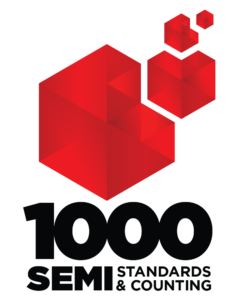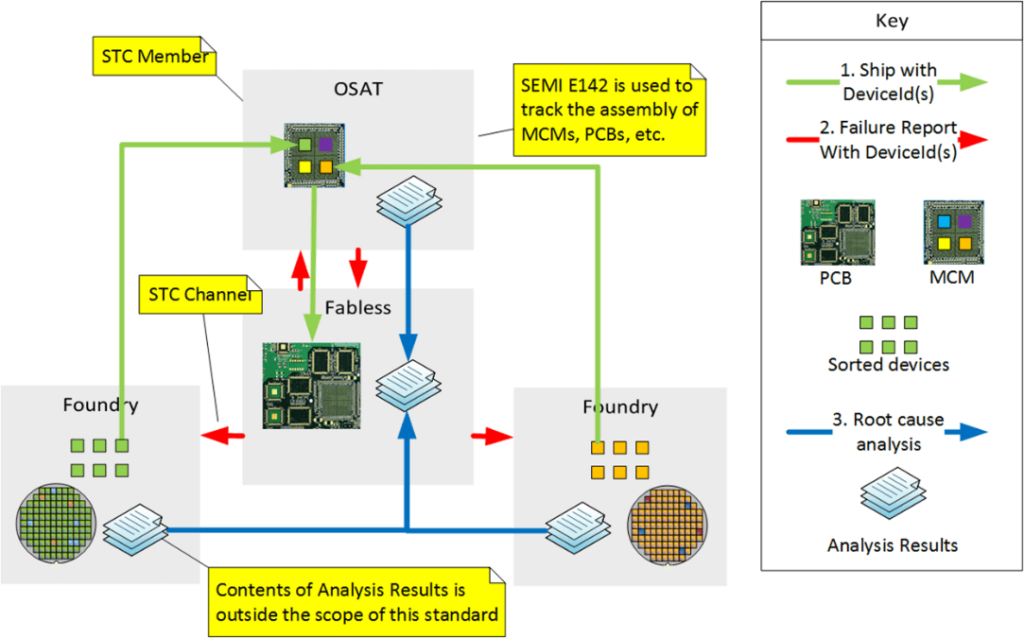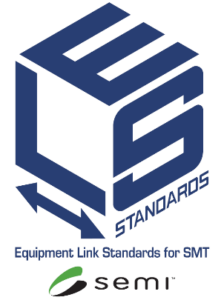The first SEMI Standards Committee was formed in 1973 to address silicon wafer dimensional specifications. At the time, there was a proliferation of over 2000 different wafer specifications, leading to major inefficiencies at a time when the industry was just getting underway. Wafer suppliers banded together under SEMI to solve this problem and rapidly developed consensus specifications for 2-inch and 3-inch wafers and by the mid-1970s over 80% of wafers being shipped conformed to these new standards.
Since that time, the SEMI Standards Program has saved the industry untold billions of dollars by defining interoperability specifications, guidelines, and test methods that have streamlined semiconductor manufacturing and ensured the smooth operation of hundreds of pieces of equipment — all working automatically around the clock.
The 1000th SEMI Standard
 The Program recently reached a major milestone, with the development of our 1000th Standard, SEMI S30: EHS Guideline for Use of Energetic Materials in Semiconductor R&D and Manufacturing Processes. Given the major contributions that SEMI Safety Guidelines have made to the industry, it’s only fitting that our 1000th Standard comes from our EHS Committee.
The Program recently reached a major milestone, with the development of our 1000th Standard, SEMI S30: EHS Guideline for Use of Energetic Materials in Semiconductor R&D and Manufacturing Processes. Given the major contributions that SEMI Safety Guidelines have made to the industry, it’s only fitting that our 1000th Standard comes from our EHS Committee.
Many processes used in manufacturing semiconductors require extremely reactive chemistry. Some process chemicals used are hazardously exothermic, pyrophoric or water-reactive. While control procedures are in place to minimize the risks of such materials, new and emerging materials, some with unknown properties, have been introduced into manufacturing, causing potential risks for fire or explosion, which could release toxic chemicals to the environment.
From the period of 2011 – 2014, over 70 incidents were reported related to the use of new energetic compounds, causing loss of life, significant facility damage, and production business interruption. This spurred several leading semiconductor device manufacturers, including GLOBALFOUNDRIES, IBM, Intel, Samsung, SK Hynix, TI, and TSMC, to determine the need for a comprehensive international best-known methods safety guideline for safe use, handling, processing, and disposal of reactive hazardous materials that have or may exhibit energetic properties. This led to the formation of the Energetic Materials EHS Task Force. Through the active participation of device manufacturers, chemical suppliers, equipment manufacturers, and third-party evaluators, the industry now has SEMI S30, which contains the best industry practices and safety guidelines for handling energetic materials.
Smart Manufacturing
SEMI Smart Manufacturing activities have played a key role in the development of the current industry, enabling today’s highly adaptive, self-diagnosing, and interoperable fabs. SEMI’s suite of Equipment Data Acquisition (EDA) Standards define high-speed data publication from any manufacturing equipment to any data consumer through web services with the ultimate goal of increased productivity, improved product quality, and reduced costs. Also known as “Interface A,” these standards address many different aspects of data collection — equipment modeling, data transmission, encoding, collection, management, and more.
To support the industry’s growing demands to collect more data from equipment at faster rates, the global Information and Control Committee is at work updating the EDA Standards to use newer and better technologies and practices. EDA Freeze 3 will identify a specific set of SEMI Standards and versions so that equipment suppliers, software providers, and fabs can all share a common data collection infrastructure, which will provide a nearly real-time stream of data that can be used to optimize manufacturing.
2019 also saw new equipment communication standards tailored specifically for the HB-LED, PCB and SMT industries.
- SEMI A3, Specification for Printed Circuit Board Equipment Communication Interfaces, was created to support smart manufacturing for printed circuit board (PCB) makers by providing ready access to the equipment interface across the PCB manufacturing process. The specification lays the foundation for a reliable and extensible information technology (IT) integration framework for PCB manufacturing based on proven standards using a multi-layered approach. The specification references existing SEMI standards as much as possible to realize these layers. However, a small set of restrictions has been defined to simplify their application in the PCB industry, thus improving the level of acceptance.
- Although automation in light-emitting diode (LED) fabs is starting later than automation in the semiconductor wafer fabs, it is rapidly progressing. Many LED fabs already use SEMI communication protocols borrowed from wafer fabs, but handling and movement of carriers and wafers in LED fabs are different for LED. SEMI HB13, New Standard: Specification of Susceptors for HB-LED MOCVD Equipment Communication Interface, defines data collection for tracking wafer activity when using a susceptor or a wafer carrier, building on the previously published SEMI HB4 – Specification of Communication Interfaces for High Brightness LED Manufacturing Equipment.
 EMI SMT Equipment Link (SMT-ELS) Standards provide various benefits, allowing for a higher level of connectivity and control capabilities for SMT assembly lines <insert logo here>. The newly developed SEMI A2, Specification for Surface Mount Assembler Smart Hookup (SMASH), builds on the general-purpose advanced machine to machine (M2M) interface SEMI A1, Specification for Horizontal Communication Between Equipment for Factory Automation System, providing an interface specification that replaces the conventional electrical interface with a network connection and adds data communication capability.
EMI SMT Equipment Link (SMT-ELS) Standards provide various benefits, allowing for a higher level of connectivity and control capabilities for SMT assembly lines <insert logo here>. The newly developed SEMI A2, Specification for Surface Mount Assembler Smart Hookup (SMASH), builds on the general-purpose advanced machine to machine (M2M) interface SEMI A1, Specification for Horizontal Communication Between Equipment for Factory Automation System, providing an interface specification that replaces the conventional electrical interface with a network connection and adds data communication capability.
Back-End Progress
Activities at SEMI have traditionally focused on the front-end, but companies involved in the back end are increasingly realizing the benefits of developing global consensus, industry-wide SEMI Standards.
Panel Level Processing (PLP) incorporates a mix of LCD, PCB, wafer-level, and high-density interconnect toolsets, leading to a chaotic industry landscape. PLP has been projected to become a critical packaging process and manufacturers are increasingly driving their suppliers to provide panel-processing tools and materials to allow them to bring wafer-level precision to packaged processed on panel substrates. One of the barriers to its adoption is the lack of a standardized panel size. SEMI 3D20 – Specification for Panel Characteristics for Panel Level Packaging (PLP) Applications, focused on external panel dimensions, which will accelerate the adoption of PLP by eliminating the need to customize equipment and processes for a variety of panel sizes. A follow-on effort seeks to standardize critical dimensions for the corresponding equipment interfaces, specifically the FOUP load port.
To further strengthen Smart Manufacturing capabilities supporting high-end packaging operations, revision work in underway on widely adopted standard, SEMI E142: Specification for Substrate Mapping, to enable tighter quality control requirements for advanced packaging and assembly. SEMI E142 defines the data items that are required to report, store, and transmit map data for substrates such as wafers, frames, strips, and trays. After this latest revision, SEMI E142 will define additional substrate types (e.g., PCB and panels) and how the physical substrates can be aligned with the E142 map data.
Traceability
The complexity and rigorous quality requirements of advanced technologies demand effective and efficient traceability across the microelectronics manufacturing supply chain. Sharing pertinent information enables faster and more detailed root cause analysis, critical for process improvement and excursion containment. Recent SEMI Standards work is helping establish a universal foundation to increase transparency and reduce traceability cost and complexity, enabling smart collaboration across the microelectronics supply chain (Figure 1).

The newly published SEMI T23, Specification for Single Device Traceability for the Supply Chain, provides a standardized approach for traceable device-level identification throughout the IC manufacturing, test, and assembly processes to the point of use in the final system. Suppliers and board-level manufacturers can use this unique identifier to communicate about a specific device for the purposes of performance assessment or failure analysis. The unique identifier will also allow manufacturing data to be sent backward and forward through the supply chain to perform data analysis.
Building on SEMI T23’s capabilities, the Traceability Committee is now developing a new standard, Specification for Counterfeit Prevention for the Electronics Manufacturing Supply Chain, to provide secure and confidential authentication of parts as they flow between multiple segments of the supply chain.
2020 and Beyond
SEMI Standards have enabled the production of more than 2.2 billion wafers and 1.8 trillion IC devices. Referenced more than 10 million times in production fab purchases, more than 25 SEMI Standards, on average, are cited in each purchase order for semiconductor equipment and materials in the electronic manufacturing ecosystem.
In 2020, topics like big data, energy conservation, fab equipment information security, and power semiconductors look to be the main focus of our task forces and committees, and additional topics are certain to emerge. SEMI will be celebrating its 50th anniversary in 2020, and the Standards Program will continue to play a critical role as the industry becomes increasingly more complex and interconnected.
This article originally appeared in the 3D InCites 2020 Yearbook. Download your issue here.
Header image: At Fraunhofer IZM, the PLP consortium is working to determine the ideal panel size for standardization. (Image courtesy of Fraunhofer IZM)





 EMI SMT Equipment Link (SMT-ELS) Standards provide various benefits, allowing for a higher level of connectivity and control capabilities for SMT assembly lines <insert logo here>. The newly developed SEMI A2, Specification for Surface Mount Assembler Smart Hookup (SMASH), builds on the general-purpose advanced machine to machine (M2M) interface SEMI A1, Specification for Horizontal Communication Between Equipment for Factory Automation System, providing an interface specification that replaces the conventional electrical interface with a network connection and adds data communication capability.
EMI SMT Equipment Link (SMT-ELS) Standards provide various benefits, allowing for a higher level of connectivity and control capabilities for SMT assembly lines <insert logo here>. The newly developed SEMI A2, Specification for Surface Mount Assembler Smart Hookup (SMASH), builds on the general-purpose advanced machine to machine (M2M) interface SEMI A1, Specification for Horizontal Communication Between Equipment for Factory Automation System, providing an interface specification that replaces the conventional electrical interface with a network connection and adds data communication capability.

















